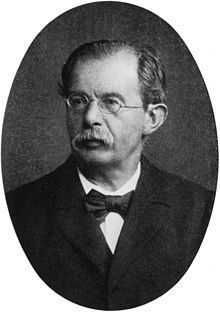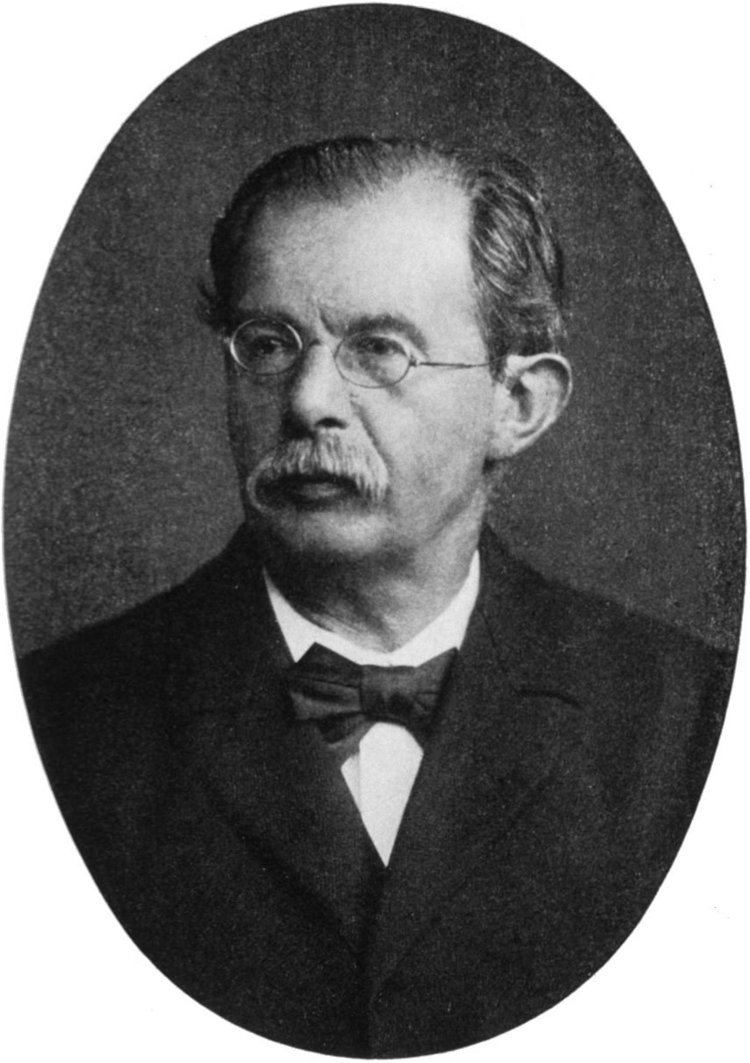Nationality German | Name Friedrich von | |
 | ||
Died August 26, 1910, Strasbourg, France Children Heinrich von Recklinghausen | ||
Friedrich Daniel von Recklinghausen ( [ˈʁɛklɪŋhaʊzən]; 2 December 1833 – 26 August 1910) was a German pathologist born in Gütersloh, Westphalia. He was the father of physiologist Heinrich von Recklinghausen (1867–1942).
Contents

Academic background
He studied medicine at the Universities of Bonn, Würzburg and Berlin, earning his doctorate at the latter institution in 1855. Afterwards he studied pathological anatomy under Rudolf Virchow, the father of modern pathology, and obtained his doctorate with Virchow as his advisor. He subsequently undertook an educational journey to Vienna, Rome, and Paris. From 1866 to 1872 he was a professor at the University of Würzburg, and for more than three decades (1872–1906), a professor at the University of Strassburg. At Strassburg he helped to recruit a number of important people to the school, such as anatomist Wilhelm von Waldeyer-Hartz (1836-1921).
Contributions
In 1882 Recklinghausen released a monograph that reviewed previous literature and characterized the tumors of neurofibromatosis type I or NF-1 as neurofibromas, consisting of an intense commingling of nerve cells and fibrous tissue. NF-1 is sometimes referred to as "von Recklinghausen syndrome".
In 1889 he coined the term "haemochromatosis", and was the first to provide the link between haemochromatosis and iron accumulation in body tissue. Recklinghausen published his findings in a treatise titled Hämochromatose (1889).
He is credited with establishing a method for staining lines of cell junctions with silver, a procedure that led to Julius Friedrich Cohnheim’s research on leukocyte migration and inflammation. In 1910, he coined the term oncosis (derived from ónkos, meaning swelling). This term is sometimes used to describe Ischemic cell death. In addition, he is credited with performing important studies on the heart and circulation.
